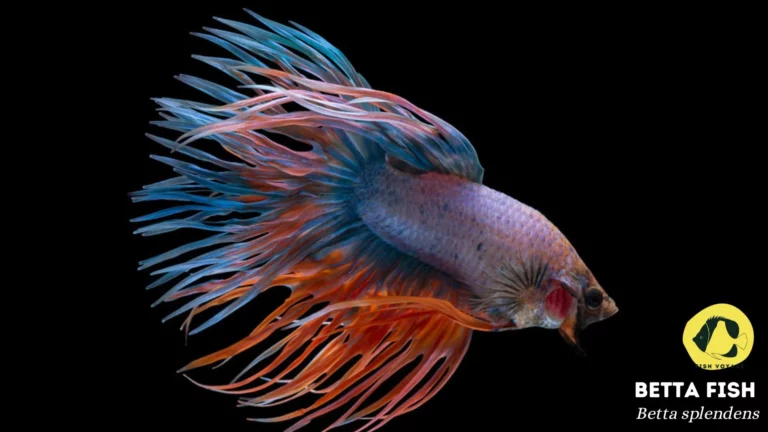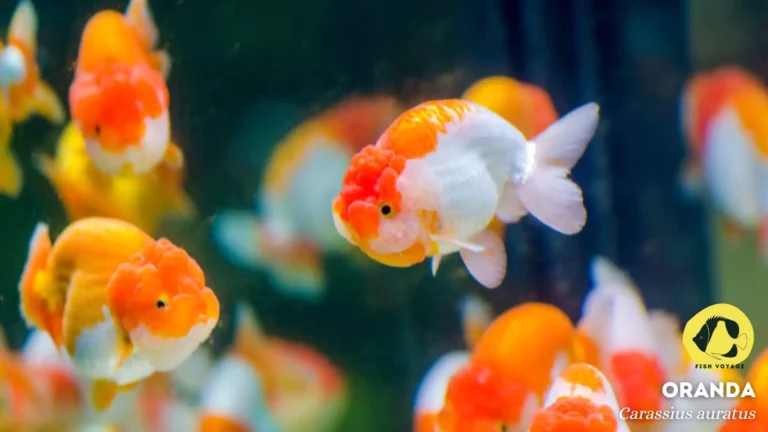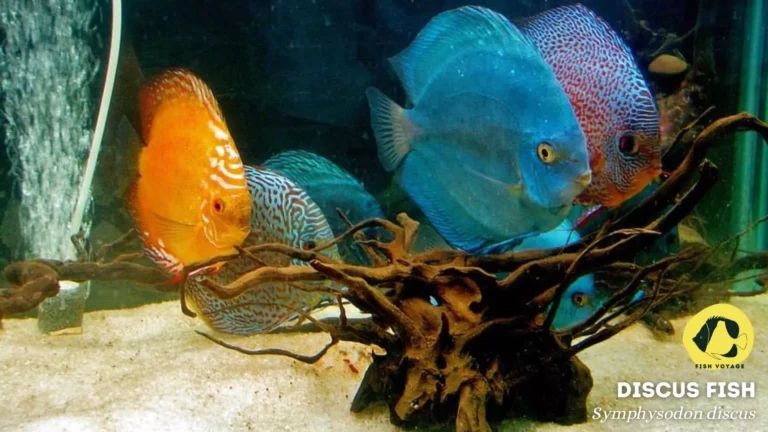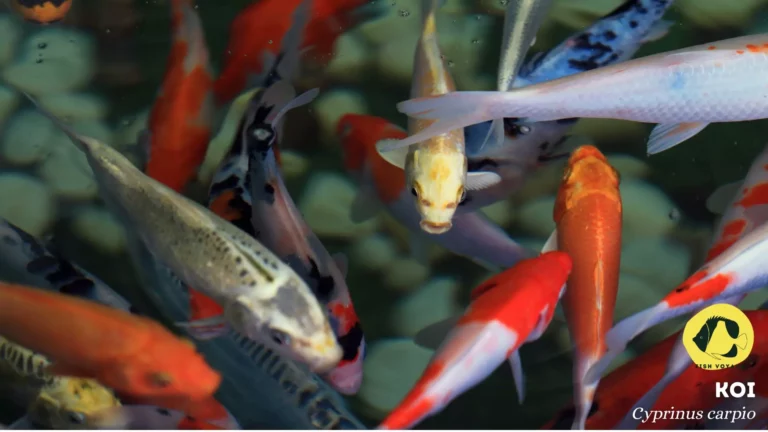Setting Up A Tropical Fish Tank For The First Time!
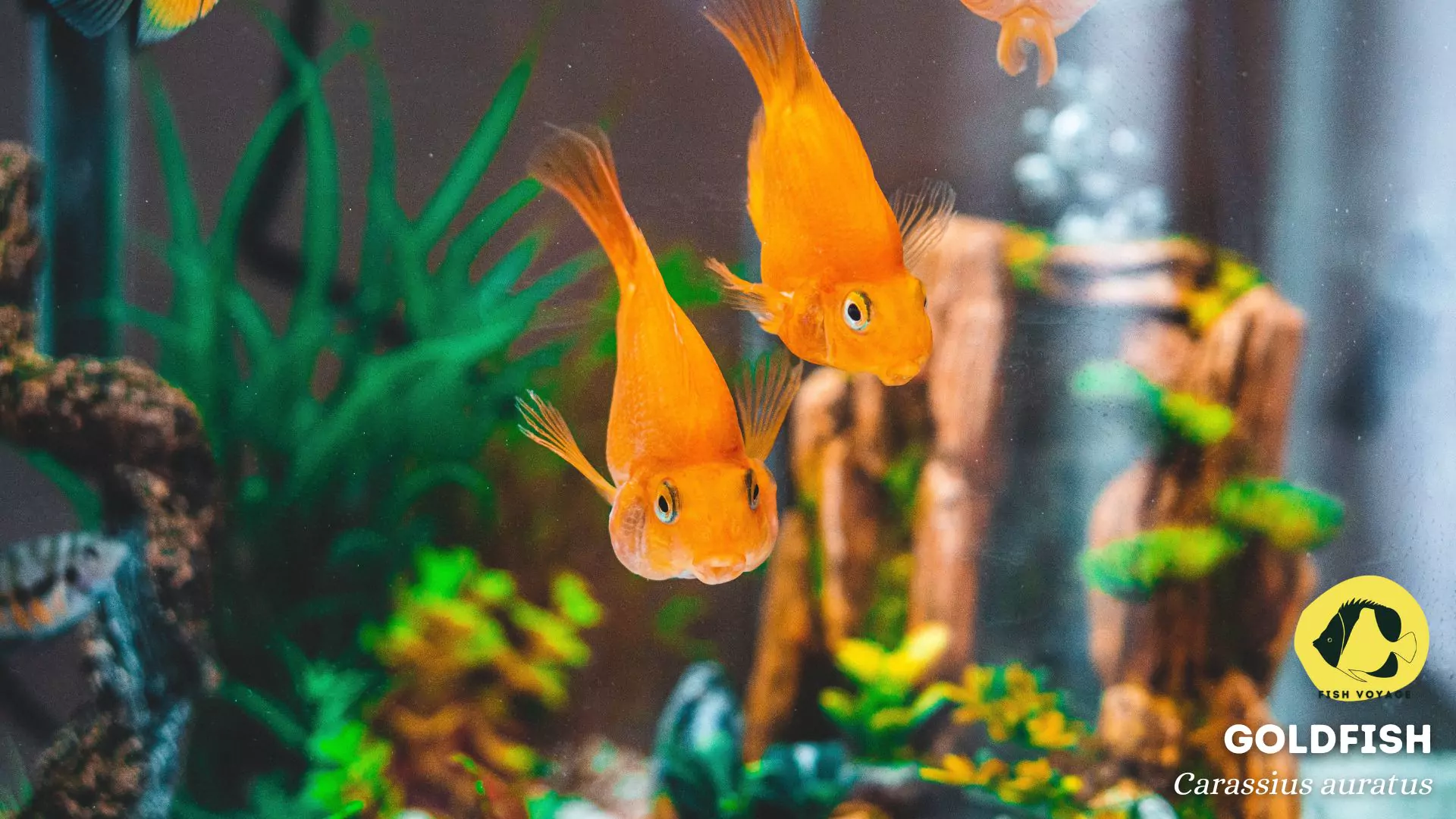
Embarking on the journey of setting up a tropical fish tank is not just a hobby; it’s an immersive experience that brings joy and tranquility into your space. The mesmerizing colors and graceful movements of tropical fish create a living work of art, fostering a sense of serenity and connection with nature. Beyond the aesthetic allure, there are significant benefits to consider. A properly set up tank provides a thriving environment for your finned companions, ensuring their health and vitality. It’s not merely an assembly of glass, water, and fish; it’s a carefully curated ecosystem that demands attention to detail.
For first-time enthusiasts, the prospect of creating a miniature aquatic world is exhilarating. The anticipation of welcoming vibrant aquatic life into your home adds an element of excitement to the endeavor, making each step in the setup process a moment to savor. In this guide, we delve into the essential aspects of creating your tropical fish haven, ensuring both the well-being of your aquatic friends and the fulfillment of your newfound passion.
Planning Your Tropical Fish Tank
Appropriate Fish Species for Beginners
Hardy and Easy-to-Care-for Species
When embarking on your tropical fish tank journey, opt for species renowned for their hardiness and beginner-friendly nature. Hardy fish, such as the vibrant platy or the charming guppy, are resilient, forgiving of minor lapses in care, and ideal for those new to aquarium maintenance.
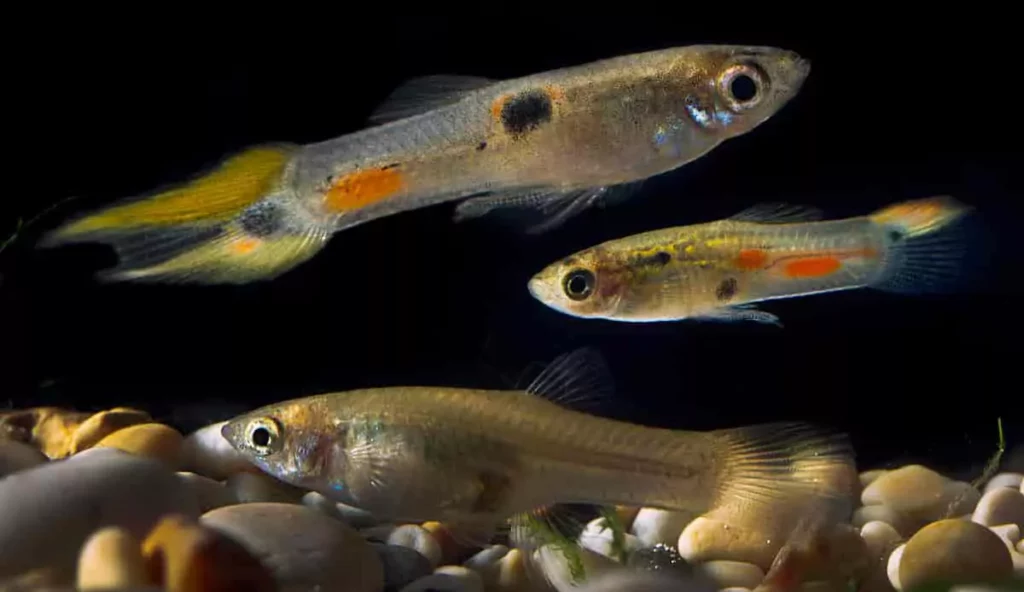
Consider Compatibility Among Different Species
The harmonious coexistence of your aquatic inhabitants is crucial. Research the compatibility of various species to avoid conflicts in the tank. Opt for fish with similar water parameter requirements and temperaments to foster a peaceful aquatic community.
Select an Appropriate Tank Size
Relationship Between Tank Size and Fish Number/Type
The size of your tank directly influences the well-being of your aquatic companions. Larger tanks provide a more stable environment and accommodate a greater variety of fish. Understand the specific spatial needs of your chosen species and ensure your tank size aligns with those requirements.
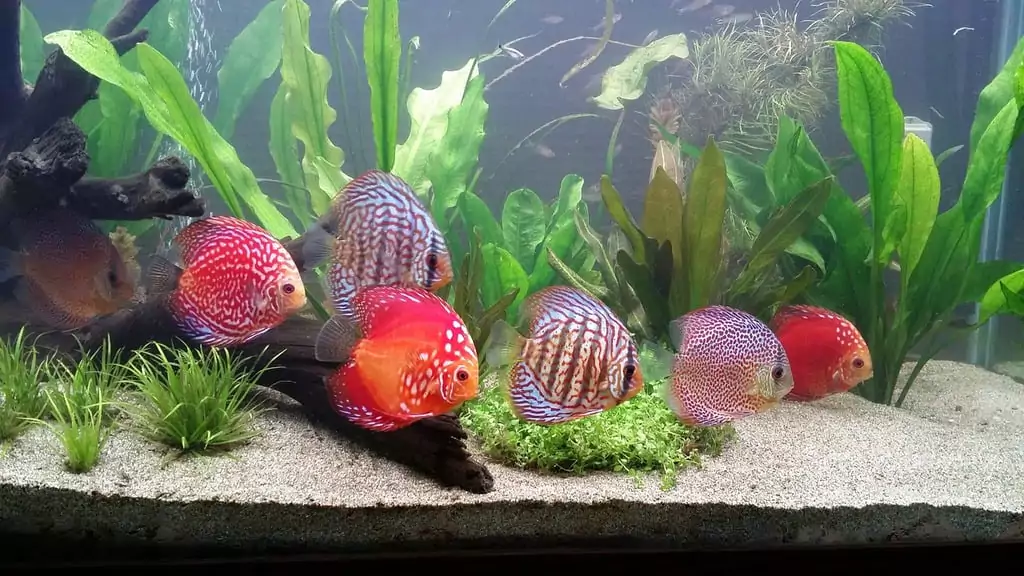
Importance of Adequate Space for Fish to Thrive
Adequate space is not a luxury but a necessity for the flourishing of your fish. Sufficient room reduces territorial disputes and stress, promoting healthier and happier aquatic inhabitants. Consider the adult size of the fish you plan to keep, and choose a tank size that allows them to swim freely.
Gather Necessary Equipment and Supplies
Tank, Filter, Heater, Substrate, Decorations, etc.
Assemble the essentials for a thriving aquarium. Invest in a quality tank that suits your available space, a reliable filter for water purification, a heater to maintain optimal temperature, suitable substrate for the tank bottom, and decorations to create a visually appealing environment.
Checklist for Easy Reference
To streamline your preparation process, use a checklist. Ensure you have all necessary items before setting up your tank. This checklist will serve as a valuable reference point, helping you avoid oversights and ensuring a comprehensive setup.
Setting Up Your Tank
Tank Placement
Choose an Ideal Location with Minimal Sunlight Exposure
Selecting the right spot for your tank is pivotal. Opt for an area with minimal direct sunlight exposure to prevent excessive algae growth and temperature fluctuations. This ensures a stable environment for your tropical aquatic ecosystem.
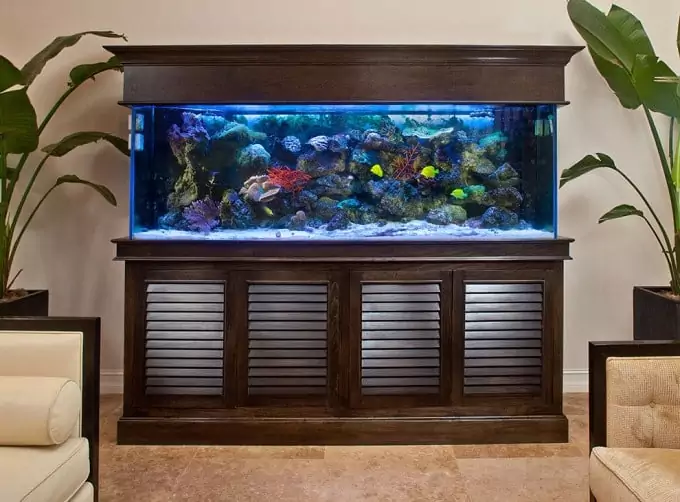
Importance of a Stable and Level Surface
A stable and level surface is the foundation for a successful aquarium. Uneven surfaces can stress the tank, potentially leading to leaks or structural issues. Choose a sturdy, level base to support the weight of the tank, distributing it evenly to prevent any stress points.
Tank Assembly
Step-by-Step Guide on Putting Together the Tank
Begin by thoroughly cleaning the tank and placing it on the designated surface. Install the filtration system and heating element according to the manufacturer’s instructions. Fill the tank with dechlorinated water, leaving room for adjustments. Carefully introduce any required water conditioners.
Safety Considerations
Prioritize safety during tank assembly. Ensure all electrical components are securely in place and away from water sources. Double-check the structural integrity of the tank, and follow safety guidelines for handling any equipment. Taking these precautions lays the groundwork for a secure aquatic environment.
Adding Substrate and Decorations
Role of Substrate in a Fish Tank
Substrate serves as the foundation for both aesthetic and practical purposes. It provides a surface for beneficial bacteria to colonize, aiding in the nitrogen cycle. Choose a substrate compatible with your selected fish and plants, balancing functionality with visual appeal.
Tips for Arranging Decorations
Decorating your tank enhances its visual appeal and offers hiding spots for fish. Create a natural-looking environment by strategically placing decorations. Consider the preferences of your fish species—some enjoy caves for shelter, while others prefer open spaces. Aim for a balanced and visually pleasing layout.
Water Conditions and Filtration
Water Quality
Nitrogen Cycle and Its Importance
Understanding the nitrogen cycle is fundamental to maintaining a healthy aquatic environment. This natural process involves the conversion of ammonia to nitrite and then nitrate by beneficial bacteria. Highlight the significance of a stable nitrogen cycle in breaking down fish waste and maintaining water quality.
Guide on Testing and Maintaining Water Parameters
Regular testing of water parameters is essential for a thriving fish tank. Provide a step-by-step guide on testing pH, ammonia, nitrite, nitrate, and other crucial parameters. Emphasize the importance of maintaining stable conditions and offer insights into corrective actions if parameters deviate from the ideal range.
Filtration System
Significance of a Good Filtration System
A reliable filtration system is the backbone of a healthy aquarium. Explain how filtration removes debris, chemicals, and harmful substances, ensuring optimal water quality. Highlight its role in creating a stable environment for fish and supporting the overall well-being of the aquatic ecosystem.
Tips on Choosing the Right Filter for Your Tank Size
Selecting the appropriate filter is critical for the success of your aquarium. Tailor your choice to the size of your tank, considering factors such as flow rate and filtration capacity. Offer insights into different types of filters, including hang-on-back, canister, and sponge filters, guiding readers toward the most suitable option for their specific tank requirements.
Introducing Fish to the Tank
Acclimating Fish
Importance of Slow Acclimation to Prevent Stress
The transition from pet store to home aquarium can be stressful for fish. Emphasize the importance of gradual acclimation to minimize stress. Rapid changes in water conditions or temperature can adversely affect fish health, making a slow introduction crucial for their well-being.
Steps to Acclimate Fish to the New Environment
- Float the sealed bag containing the fish in the tank for 15-20 minutes to equalize temperature.
- Open the bag and add small amounts of tank water to it every 5-10 minutes.
- Once the volume doubles, gently net the fish and release it into the tank.
- Avoid introducing water from the pet store into the aquarium to prevent the transfer of potential pathogens.
Monitoring Behavior
Guide on Observing Fish Behavior for Signs of Stress or Illness
Educate aquarium enthusiasts on the art of fish observation. Explain how attentive monitoring can reveal insights into the well-being of fish. Common signs of stress or illness include erratic swimming, changes in coloration, and hiding. Encourage hobbyists to familiarize themselves with the normal behavior of their specific fish species.
Tips on Addressing Common Issues
- Isolate Affected Fish: If signs of illness or aggression are observed, promptly isolate the affected fish to prevent the spread of disease or injury.
- Check Water Parameters: Verify and adjust water parameters if fish exhibit stress-related behaviors. Correct any deviations promptly to maintain a stable environment.
- Consult a Veterinarian: For persistent issues, advise readers to consult with a fish veterinarian or seek guidance from experienced aquarium forums.
Routine Maintenance
Water Changes
Importance of Regular Water Changes
Regular water changes are the lifeblood of a thriving aquarium. Emphasize the significance of these changes in removing accumulated waste, replenishing essential minerals, and maintaining optimal water quality. Routine water changes contribute to a stable environment, promoting the health and longevity of your fish.
How to Perform a Water Change Safely
- Test Water Parameters: Before a water change, test key parameters such as pH, ammonia, nitrite, and nitrate to ensure they are within acceptable ranges.
- Use a Gravel Vacuum: Utilize a gravel vacuum to siphon debris from the substrate during water changes. This helps in removing uneaten food and waste that may contribute to water pollution.
- Replace 10-20% of Water: Aim to replace 10-20% of the tank water every 1-2 weeks. This gradual approach minimizes stress on fish and preserves the beneficial bacteria.
Cleaning and Maintenance
Tips on Maintaining a Clean and Healthy Tank
- Regular Glass Cleaning: Wipe off algae and water stains from the aquarium glass using a soft sponge or algae scraper. Regular cleaning maintains visibility and enhances the aesthetic appeal.
- Prune Live Plants: If the tank includes live plants, trim them regularly to prevent overgrowth. This not only maintains the tank’s visual balance but also supports the health of the plants.
- Inspect Equipment: Regularly inspect and clean equipment such as filters, heaters, and pumps to ensure they function optimally.
Addressing Algae and Common Issues
- Control Lighting Duration: Manage the aquarium lighting duration to discourage excessive algae growth. Aim for 8-10 hours per day and consider using a timer for consistency.
- Adjust Feeding Practices: Overfeeding contributes to excess waste and nutrient buildup. Advise readers to feed their fish in controlled portions to prevent water quality issues.
- Algae-Eating Species: Introduce algae-eating species such as snails or certain fish to help naturally control algae growth.
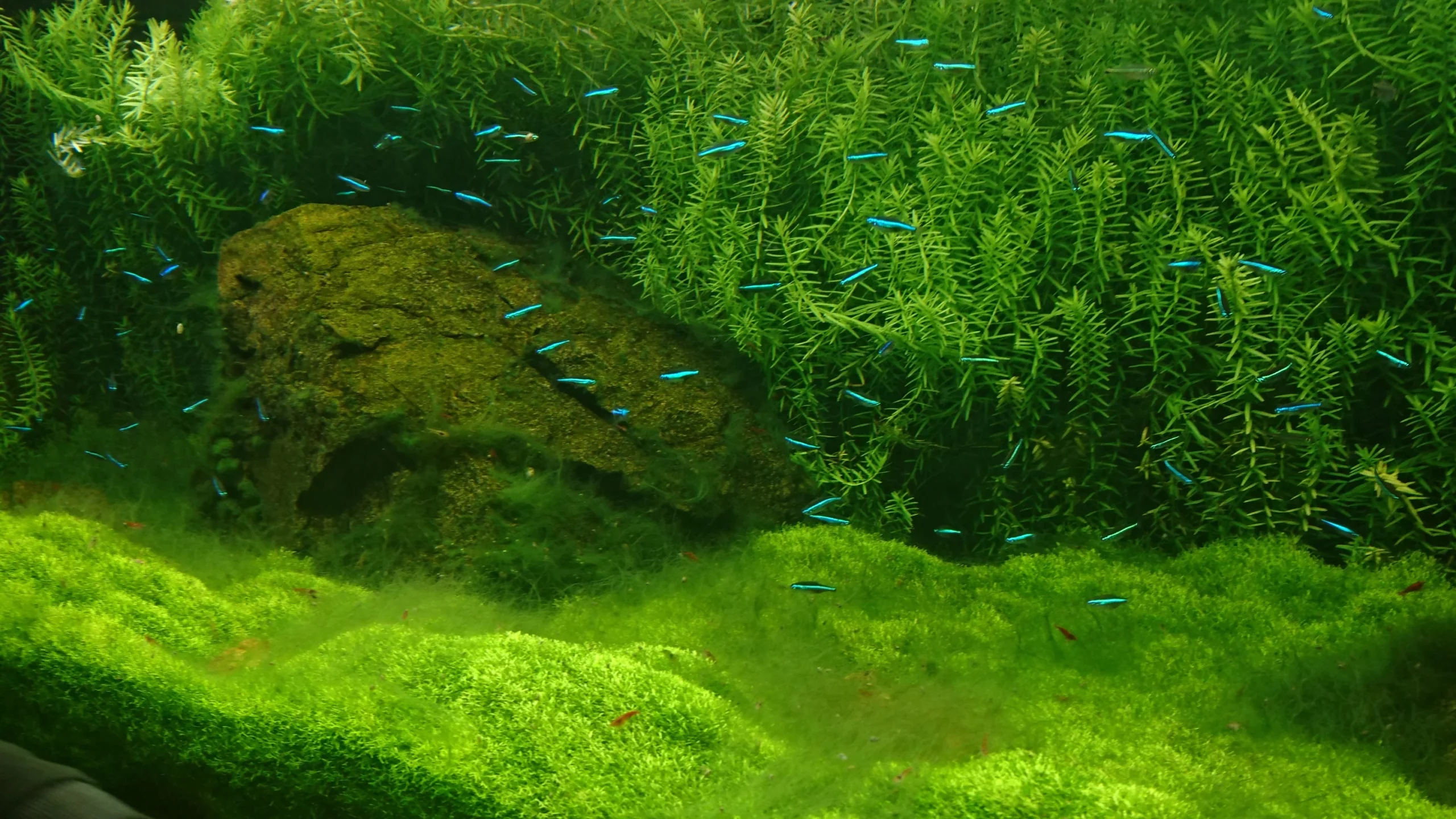
Conclusion
Embarking on the journey of setting up a tropical fish tank for the first time is both a rewarding and educational experience. As you’ve navigated through the key steps, from careful planning to routine maintenance, you’ve laid the foundation for a thriving aquatic ecosystem within your home.
Recap of Key Steps
- Thoughtful Planning: Select hardy fish species, choose an appropriate tank size, and gather essential equipment.
- Meticulous Setup: Ensure the tank is placed in an ideal location, assembled correctly, and adorned with suitable substrate and decorations.
- Water Conditions and Filtration: Understand the nitrogen cycle, maintain water parameters, and invest in a reliable filtration system.
- Introducing Fish: Acclimate your fish gradually to minimize stress and monitor their behavior closely.
- Routine Maintenance: Perform regular water changes, keep the tank clean, and address common issues promptly.
Your journey into the world of tropical fish keeping is just beginning. Encourage readers to continue their exploration and stay informed about the latest developments in aquarium care. Ongoing research will deepen their understanding and enhance the well-being of their aquatic companions.
We value the diverse experiences of our readers. Feel free to share your successes, challenges, or any additional tips you’ve discovered on your fish-keeping journey. If you have questions or seek advice, our community is here to help. Your insights contribute to the collective knowledge of the aquarium enthusiast community.
As you embark on this aquatic adventure, may your tropical fish tank bring endless joy, serenity, and a newfound appreciation for the delicate balance of nature within the confines of glass walls.
Additional Resources
For continued learning and community engagement in the dynamic world of tropical fish keeping, explore the following additional resources.
Reliable Forums for Further Information
- AquariumAdvice: Join a diverse community of experienced hobbyists and beginners alike. Share your experiences, seek advice, and participate in discussions covering a wide range of topics related to tropical fish care.
- ThePlantedTank: Dive into the world of planted aquariums. Connect with enthusiasts who share a passion for creating lush and vibrant underwater landscapes. Gain insights into plant care, aquascaping, and more.
- Fishlore: A comprehensive forum offering valuable insights into fish care, tank setup, and troubleshooting common issues. Engage with a supportive community that welcomes questions from all levels of expertise.
Reliable Books for Further Reading
- The Complete Idiot’s Guide to Freshwater Aquariums by Mike Wickham: A comprehensive guide suitable for beginners, covering everything from tank setup to fish selection and ongoing maintenance. It provides practical advice and insights in an accessible format.
- Aquarium Plants: The Practical Guide by Pablo Tepoot: For those interested in creating a lush planted aquarium, this book offers a detailed guide to aquatic plant care, maintenance, and aquascaping techniques.
- The Conscientious Marine Aquarist by Robert M. Fenner: A valuable resource for marine aquarium enthusiasts, this book covers the essentials of saltwater tank setup, species selection, and maintenance, providing a thorough understanding of the marine environment.
These resources serve as valuable companions on your journey, offering a wealth of knowledge and perspectives from experienced enthusiasts and experts. Explore, learn, and enjoy the fascinating world of tropical fish keeping!
Frequently Asked Questions (FAQs)
1. What size tank is ideal for beginners setting up a tropical fish tank?
Ideal tank size depends on the species you choose. For beginners, a 20-30-gallon tank is recommended for its stability and versatility. It accommodates a variety of hardy and easy-to-care-for fish, providing a suitable learning environment.
2. How long does the nitrogen cycle take, and why is it important?
The nitrogen cycle typically takes 4-6 weeks to establish. It’s crucial for breaking down fish waste into less harmful compounds, ensuring a safe and stable environment. Regular testing and patience during this period are essential for a healthy tank.
3. What are some low-maintenance fish species for beginners?
Consider hardy and low-maintenance species such as guppies, platies, and tetras. These fish adapt well to varying conditions and are forgiving of minor lapses in care, making them ideal choices for those new to tropical fish keeping.
4. How often should I perform water changes in my tropical fish tank?
Aim for regular water changes of 10-20% every 1-2 weeks. This helps maintain water quality by removing accumulated waste and replenishing essential minerals. Testing water parameters before changes ensures a smooth transition for your fish.
5. How do I address algae growth in my tropical fish tank?
To control algae, manage lighting duration to 8-10 hours per day and consider using a timer for consistency. Introduce algae-eating species like snails or certain fish. Regular cleaning, proper feeding practices, and maintaining balanced nutrient levels also contribute to algae prevention.

